Yongwoo Kim
Are We Truly Forgetting? A Critical Re-examination of Machine Unlearning Evaluation Protocols
Mar 10, 2025



Abstract:Machine unlearning is a process to remove specific data points from a trained model while maintaining the performance on retain data, addressing privacy or legal requirements. Despite its importance, existing unlearning evaluations tend to focus on logit-based metrics (i.e., accuracy) under small-scale scenarios. We observe that this could lead to a false sense of security in unlearning approaches under real-world scenarios. In this paper, we conduct a new comprehensive evaluation that employs representation-based evaluations of the unlearned model under large-scale scenarios to verify whether the unlearning approaches genuinely eliminate the targeted forget data from the model's representation perspective. Our analysis reveals that current state-of-the-art unlearning approaches either completely degrade the representational quality of the unlearned model or merely modify the classifier (i.e., the last layer), thereby achieving superior logit-based evaluation metrics while maintaining significant representational similarity to the original model. Furthermore, we introduce a novel unlearning evaluation setup from a transfer learning perspective, in which the forget set classes exhibit semantic similarity to downstream task classes, necessitating that feature representations diverge significantly from those of the original model. Our comprehensive benchmark not only addresses a critical gap between theoretical machine unlearning and practical scenarios, but also establishes a foundation to inspire future research directions in developing genuinely effective unlearning methodologies.
Multi-Attention Based Ultra Lightweight Image Super-Resolution
Sep 21, 2020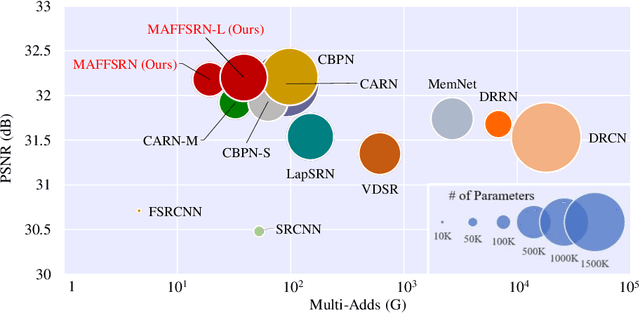
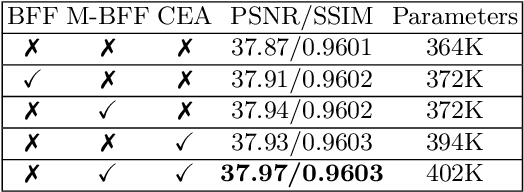


Abstract:Lightweight image super-resolution (SR) networks have the utmost significance for real-world applications. There are several deep learning based SR methods with remarkable performance, but their memory and computational cost are hindrances in practical usage. To tackle this problem, we propose a Multi-Attentive Feature Fusion Super-Resolution Network (MAFFSRN). MAFFSRN consists of proposed feature fusion groups (FFGs) that serve as a feature extraction block. Each FFG contains a stack of proposed multi-attention blocks (MAB) that are combined in a novel feature fusion structure. Further, the MAB with a cost-efficient attention mechanism (CEA) helps us to refine and extract the features using multiple attention mechanisms. The comprehensive experiments show the superiority of our model over the existing state-of-the-art. We participated in AIM 2020 efficient SR challenge with our MAFFSRN model and won 1st, 3rd, and 4th places in memory usage, floating-point operations (FLOPs) and number of parameters, respectively.
AIM 2020 Challenge on Efficient Super-Resolution: Methods and Results
Sep 15, 2020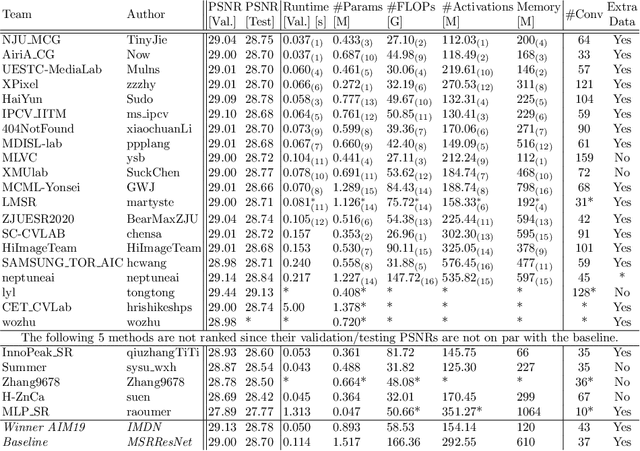
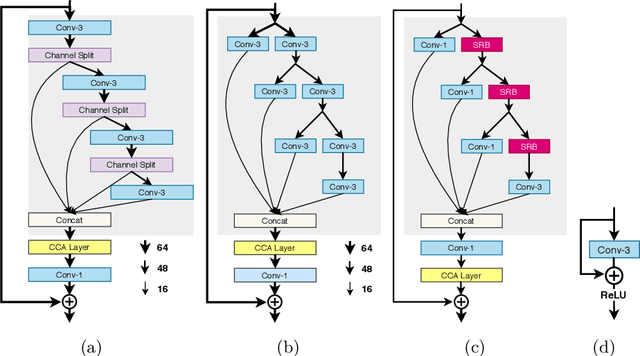

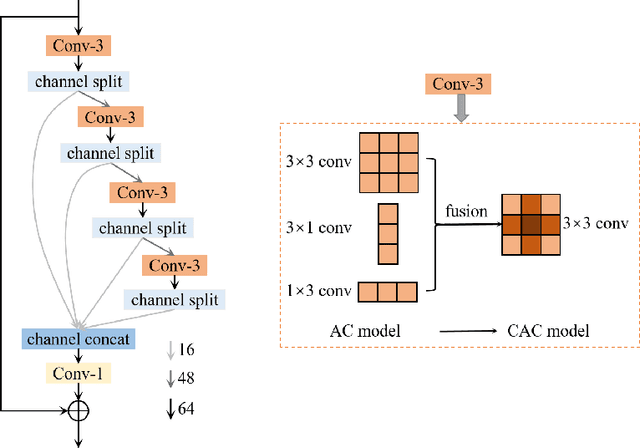
Abstract:This paper reviews the AIM 2020 challenge on efficient single image super-resolution with focus on the proposed solutions and results. The challenge task was to super-resolve an input image with a magnification factor x4 based on a set of prior examples of low and corresponding high resolution images. The goal is to devise a network that reduces one or several aspects such as runtime, parameter count, FLOPs, activations, and memory consumption while at least maintaining PSNR of MSRResNet. The track had 150 registered participants, and 25 teams submitted the final results. They gauge the state-of-the-art in efficient single image super-resolution.
S3: A Spectral-Spatial Structure Loss for Pan-Sharpening Networks
Jun 13, 2019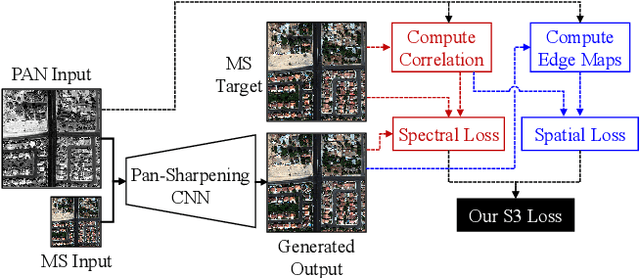
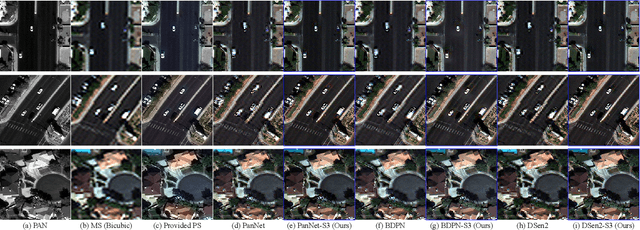
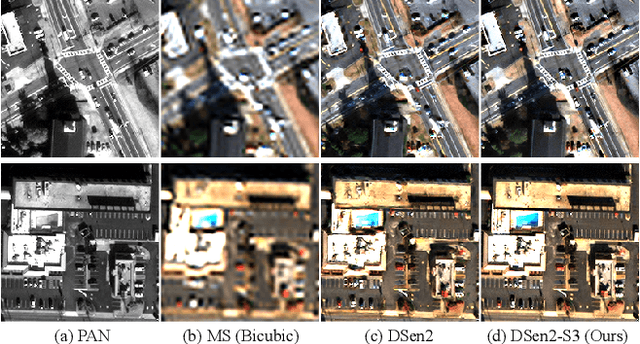

Abstract:Recently, many deep-learning-based pan-sharpening methods have been proposed for generating high-quality pan-sharpened (PS) satellite images. These methods focused on various types of convolutional neural network (CNN) structures, which were trained by simply minimizing L1 or L2 losses between network outputs and the corresponding high-resolution multi-spectral (MS) target images. However, due to different sensor characteristics and acquisition times, high-resolution panchromatic (PAN) and low-resolution MS image pairs tend to have large pixel misalignments, especially for moving objects in the images. Conventional CNNs trained with L1 or L2 losses with these satellite image datasets often produce PS images of low visual quality including double-edge artifacts along strong edges and ghosting artifacts on moving objects. In this letter, we propose a novel loss function, called a spectral-spatial structure (S3) loss, based on the correlation maps between MS targets and PAN inputs. Our proposed S3 loss can be very effectively utilized for pan-sharpening with various types of CNN structures, resulting in significant visual improvements on PS images with suppressed artifacts.
PIRM Challenge on Perceptual Image Enhancement on Smartphones: Report
Oct 03, 2018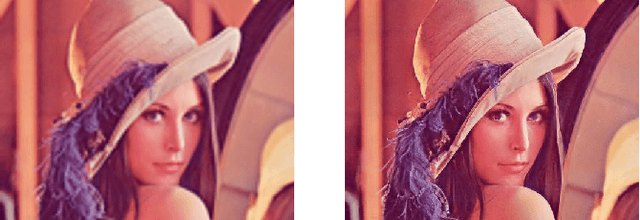



Abstract:This paper reviews the first challenge on efficient perceptual image enhancement with the focus on deploying deep learning models on smartphones. The challenge consisted of two tracks. In the first one, participants were solving the classical image super-resolution problem with a bicubic downscaling factor of 4. The second track was aimed at real-world photo enhancement, and the goal was to map low-quality photos from the iPhone 3GS device to the same photos captured with a DSLR camera. The target metric used in this challenge combined the runtime, PSNR scores and solutions' perceptual results measured in the user study. To ensure the efficiency of the submitted models, we additionally measured their runtime and memory requirements on Android smartphones. The proposed solutions significantly improved baseline results defining the state-of-the-art for image enhancement on smartphones.
 Add to Chrome
Add to Chrome Add to Firefox
Add to Firefox Add to Edge
Add to Edge